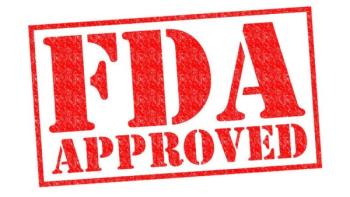
What Dermatological Side Effects Can Patients With Breast Cancer Expect?
Key Takeaways
- Dermatologic side effects from breast cancer treatments include chemotherapy-induced allergic reactions and drug-specific effects like hand-foot syndrome, and immunotherapy-related immune skin reactions.
- Alopecia is a common side effect of chemotherapy, with non-systemic interventions like cold caps and topical treatments recommended over oral supplements.
CURE spoke with experts about possible side effects faced by patients with breast cancer.
Dermatologic side effects associated with treatments is one of the significant issues facing patients with breast cancer, experts told CURE and Dermatology Times.
These side effects associated with breast cancer treatment can broadly be divided into two categories: those caused by chemotherapy and those caused by immunotherapy, Dr. Debu Tripathy explained.
Recently retired, Tripathy served as a professor and chair of the Department of Breast Medical Oncology in the Division of Cancer Medicine at The University of Texas MD Anderson Cancer Center, in Houston.
“Chemotherapy side effects can [include] allergic-type reactions, which are not very common with most of the cancer drugs, but they can occur, and these would be similar to other drug allergy reactions, where you typically get skin redness and itching,” Tripathy said.
In addition, there are more drug-specific adverse effects; for example, Xeloda (capecitabine) is known to cause hand-foot syndrome, which presents with irritation, redness, dryness and peeling of the skin typically seen on the hands and feet.
“For those types of rashes, what we tend to recommend is local-directed therapy with emollients, and that could include greasy emollients,” said Dr. Hung Q. Doan. “Vaseline or Aquaphor is a good start sometimes for cracked hands.”
Doan is an assistant professor in the Department of Dermatology in the Division of Internal Medicine at The University of Texas MD Anderson Cancer Center.
Piqray (alpelisib) and Truqap (capivasertib), Tripathy said, are associated with reactions such as skin redness and itching, and can sometimes involve the mucus membranes or affect the patient’s nail beds.
Additionally, Tripathy explained that immunotherapy drugs are used in the treatment of triple-negative breast cancer, and they are sometimes given with chemotherapy. By activating the immune system, these drugs can lead to immune-related skin reactions, including redness and itching.
“It’s usually mild and maybe a bit of a nuisance and can be treated with either topical steroids, or, if it involves a lot of the skin, then you would give steroids by mouth,” said Tripathy. “Rarely, the skin reactions from immunotherapy can be quite severe and involve the whole body and cause drops in blood pressure and more severe side effects. Again, these are very rare, but we watch for these. The mild skin reactions are not that uncommon, so we prepare patients for that possibility and tell them what they need to monitor.”
Regarding Alopecia
Patients who are on active chemotherapy also face hair loss, or alopecia, Doan noted.
“It could be due to the cytotoxic effect of the chemotherapy, as much as it is the hormonal [effects] if they’re on an antihormone therapy as well,” said Doan. “That could cause the secondary hair falling out as well, because there’s a big hormone flux sometimes with some patients who are on breast cancer treatment.”
However, Doan said he doesn’t recommend oral hair growth supplements to counter these effects.
“There are a lot of unknowns when it comes to over-the-counter supplements that we’re just now aware of. … I tend to steer away while they’re undergoing active treatment, but there are nonsystemic interventions that I’m OK with,” said Doan. “One is hair cold caps, and cold caps are usually prescribed, recommended, or managed by the primary oncology team.”
There are also over-the-counter remedies patients can try, such as a light cap that offers low-level laser therapy, or topical Rogaine, Doan said.
Empowering Patients
First and foremost, patients need to ensure they get all necessary information from their physician or nurse practicioner to understand their chances of having a skin reaction and to know what to look for, Tripathy said.
“The patient should be proactive and get a list of all the reactions, including the skin reactions, that may be possible from this drug, so awareness is the first thing,” Tripathy said. “The second thing is to monitor [the] skin. Sometimes, [patients] can develop a rash and not know it. Usually, it’s symptomatic, but even if it’s mild, [they] need to know about it so that you can monitor it.”
He also suggested that patients take photographs of any reactions.
“When [they] go to the clinic next time, if it’s not really a big skin reaction and [they] didn’t need to call about it, at least you’ll have a picture so it can be documented in the chart,” Tripathy said.
“Or if it is a more symptomatic rash, and [they] do call — and should call — they’ll be able to send that through MyChart or some other way, so that [their health care providers] can look at it. It’s possible to schedule virtual visits so that the physician or nurse practitioner can evaluate the rash.”
Furthermore, for certain drugs that are highly likely to cause skin reactions, a physician may preemptively prescribe drugs such as Zyrtec (cetirizine), a common antihistamine that can help prevent rashes.
“Patients are better informed these days when they come through my office,” said Doan. “Attitudes are changing from ‘OK, well, this is a reaction to this,’ to more of a proactive approach. I think as the years go by, awareness from the oncology team [increases] to be on the lookout, with better patient instructions. With more experience over the years, the oncologists … can intervene at an earlier time. And I think that leads to better outcomes and better skin reactions as well.”
For more news on cancer updates, research and education,





